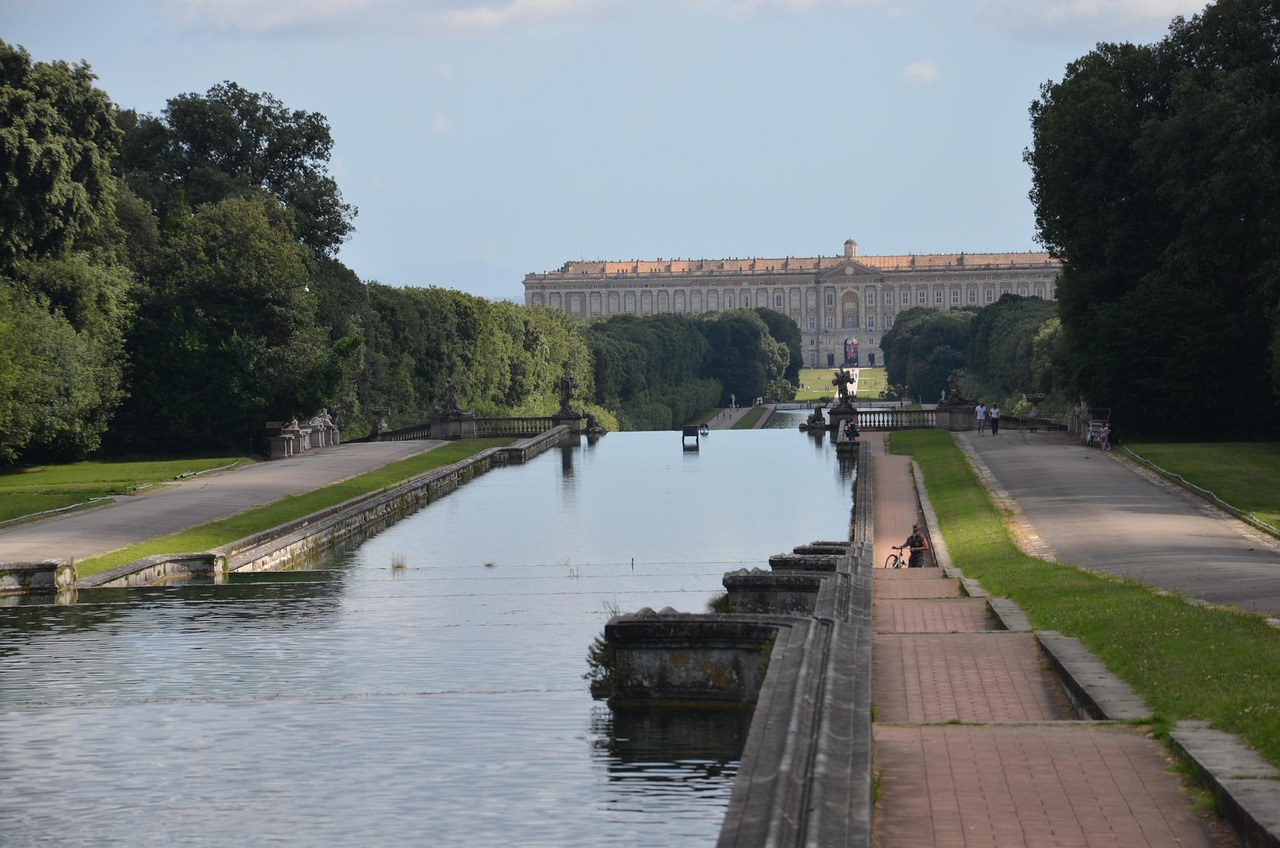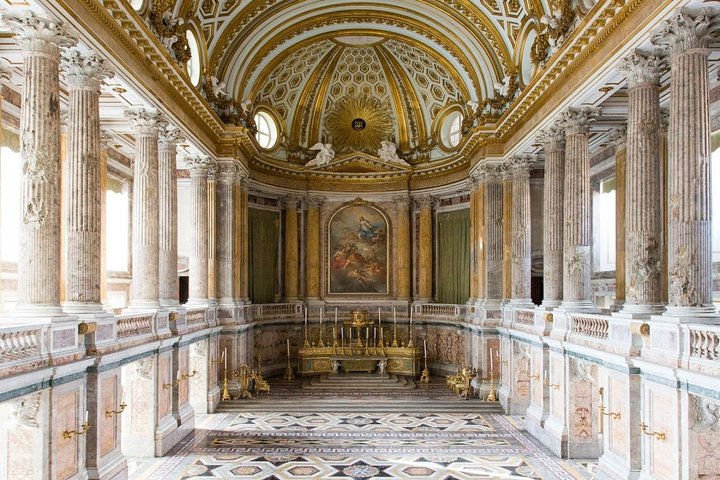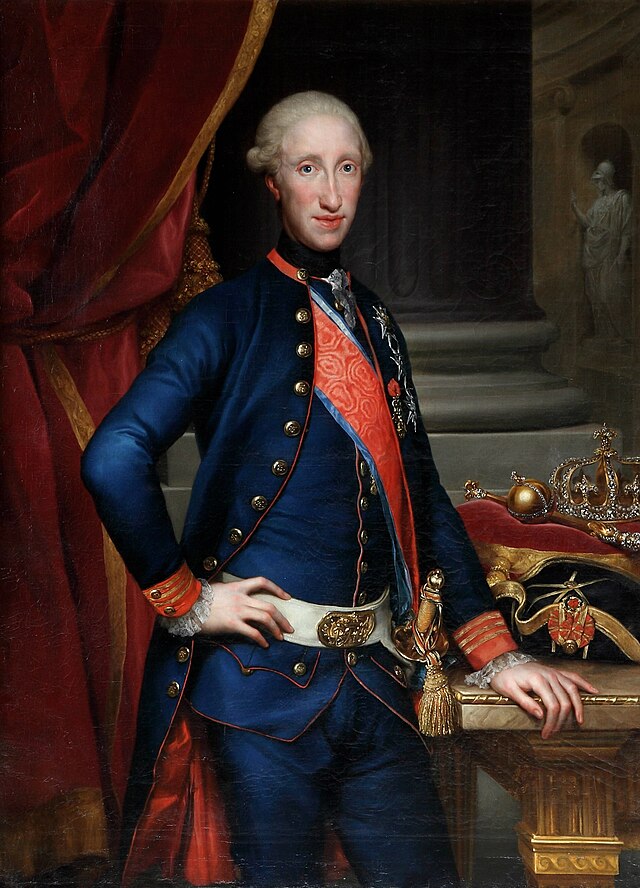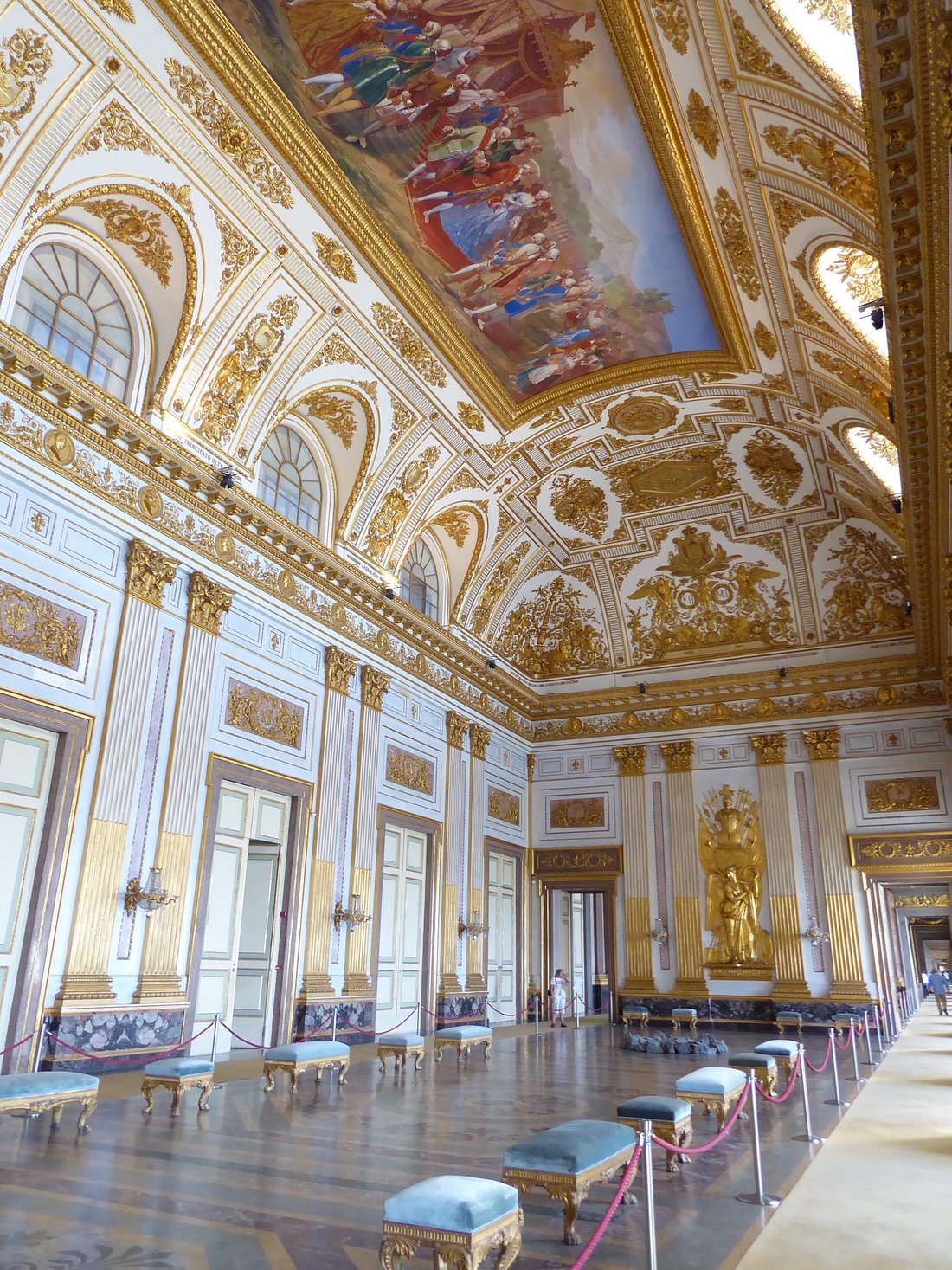Hidden among the sun-washed hills of southern Italy, there’s a royal palace that most travelers just breeze past. When I first set foot in the Royal Palace of Caserta, I honestly couldn’t believe the sheer scale—five floors, 1,200 rooms, and by volume, it’s the biggest royal residence on the planet. Versailles might hog the spotlight, but this Italian showstopper not only rivals but sometimes even outshines its French inspiration in size and grandeur.

People call it “Italy’s Versailles,” and for good reason. The Bourbon kings of Naples built the Reggia di Caserta, clearly taking cues from France’s famous palace. My favorite part? Roaming the sprawling grounds—over 11 acres of gardens, fountains, and a grand amphitheater. There’s a certain magic to these gardens, a kind of intimacy I never found in the bustling crowds at Versailles.
Despite all this splendor, Caserta remains pretty under-the-radar. I’ve been here twice now, and each visit left me scratching my head—why aren’t more people putting this on their Italy bucket list? The palace fell into neglect at one point, but today, it stands beautifully restored, its beauty and history preserved for anyone curious enough to visit.
The Royal Palace That Rivaled Versailles
When I walked through the Royal Palace of Caserta, I felt overwhelmed by its sheer scale and beauty. The place was built to one-up France’s Palace of Versailles, both in size and in style.
Origins and Vision
King Charles VII of Naples (who later became Charles III of Spain) dreamed up this palace in the 18th century. He wanted to move his administrative center away from vulnerable Naples and hired architect Luigi Vanvitelli to make his vision real.

Image Source: Wikimedia Commons
“We need a palace worthy of the Bourbon name,” the king reportedly told Vanvitelli, “one that will make Versailles seem modest.”
They kicked off construction in 1752. I learned during my tour that the whole thing wasn’t finished until 1845. The king had one goal—build not just a royal home, but a symbol of power that would leave guests awestruck and rivals uneasy.
Charles wanted the palace to anchor a new city, surrounded by government offices, military barracks, and a university.
Architectural Grandeur and Design
Every time I walked through, I found myself catching my breath. With 1,200 rooms over 235,000 square meters, Caserta takes the crown for the world’s largest royal residence by volume. The façade stretches a jaw-dropping 247 meters—talk about making a statement.

Image Source: Tripadvisor
The main staircase is just spectacular. Marble everywhere, sweeping upward in a way that almost demands you look up at the dome, painted with celestial scenes.
Inside, the royal apartments dazzle with gold moldings, frescoes, and ornate details. The throne room, with its deep red damask and gold trim, really stood out to me.
The palace gardens go on for nearly three kilometers, with fountains, sculpted hedges, and the “English Garden,” which is one of Europe’s earliest romantic landscapes.
Comparison to Versailles
Versailles might be the household name, but Caserta actually beats it in a few key ways. The palace is about three times bigger by volume, which is wild when you see it in person.
The gardens mimic Versailles’ layout but have more dramatic changes in elevation. Caserta’s water features blend into the landscape, giving the whole place a more natural feel.
Both palaces have those grand, mirror-filled halls, but I found Caserta’s Throne Room strikes a different note—less about reflection, more about open, soaring space.

Where Versailles has its Grand Canal, Caserta goes for a dramatic water cascade running the length of the gardens. The 75-meter waterfall, fed by the Carolino Aqueduct, is a feat of engineering that blew me away.
Historical Significance and the Bourbon Dynasty
The Royal Palace of Caserta stands as proof of the Bourbon monarchy’s ambition in Italy. The palace projected the absolute authority of its royal owners and served as a hub for culture and government.
Rise of the Bourbon Monarchy
The Bourbons’ influence in Italy started when Charles VII became King of Naples in 1734. I was pretty surprised to learn this branch of the Bourbon family, who also ruled France and Spain, wanted to prove their legitimacy through grand architecture. Charles VII commissioned the palace in 1752, before heading off to become Charles III of Spain.
Charles wanted a palace to rival Versailles. He brought in architect Luigi Vanvitelli to make it happen. The Bourbons of Two Sicilies ruled from Caserta until Italian unification in 1861.
Their rule transformed the region, bringing Enlightenment ideas but keeping a tight grip on power. The palace was both a symbol and a tool of their authority.
Royal Life and Court Rituals
Life in the palace followed strict protocols, much like at Versailles. The king’s day started with formal waking ceremonies and rolled on with a schedule packed with official business.
Court etiquette was extremely rigid. I found out that even approaching the royal family meant following a set of moves and gestures. The grand halls hosted lavish balls and ceremonies where nobles jockeyed for favor.
The Bourbon rulers used these rituals to reinforce the social order. The Throne Room, where I stood in awe, saw countless ceremonies that put royal power on full display.
Hundreds of courtiers, servants, and guards lived in the palace. Every detail of dining and entertainment followed rules that kept the king at the center.
Influence of French Kings
The Bourbon kings of Naples looked to their French cousins, especially Louis XIV, the “Sun King,” for inspiration. I spotted the French influence everywhere, from the architecture to the court customs.
Like Louis XIV, the Neapolitan Bourbons centralized government inside the palace. This move kept nobles close and under control.
The idea of the king as the heart of political and cultural life came straight from the French playbook. Even the gardens, with their precise geometry, echo French royal style.
Still, Caserta isn’t just a copy. Its scale actually surpasses Versailles, making it the biggest royal residence ever built. The Bourbons didn’t just imitate—they created something that, in many ways, outshines the original.
Lavish Interiors and Artistic Wonders
Walking into the Royal Palace of Caserta feels like stepping into an art lover’s fantasy. The interiors easily rival the Louvre’s, with treasures tucked into nearly every corner.
Masterpieces and Artistic Influences
The palace’s art collection floored me when I first visited. The throne room alone, with its marble floors and ceiling frescoes, is breathtaking.
In the royal apartments, every room tells a story through its art. Paintings from the Bourbon collection line the walls, and some could easily hang in Europe’s top museums.

Image Source: Tripadvisor
The Grand Staircase of Honor is a highlight. It’s a marble marvel, leading visitors upward with dramatic flair. Sunlight pours in through perfectly placed windows, lighting up the statues along the way.
The palace chapel stands out too. Modeled after Versailles’ Royal Chapel, it feels warmer and more intimate.
The Role of Rubens and Other Artists
Rubens’ style pops up all over the palace, though I learned most works came from his followers instead of the master himself. His dramatic touch inspired the ceiling paintings in several rooms.
Architect Luigi Vanvitelli worked with a bunch of Italian artists to fill the palace with Baroque and Neoclassical art. The results are just stunning.
I spent ages looking at the tapestries in the Queen’s apartments. Made in Naples, they show hunting scenes and myths in colors that somehow still look fresh.
The palace also displays porcelain from the Capodimonte factory nearby. These delicate pieces show off the skill of local artisans under royal patronage.
Enigmatic Stories and Colorful Characters
Caserta’s halls hold as many secrets and scandals as they do works of art. The palace has seen its share of intrigue, passion, and mystery.
Intrigue, Assassination, and Secrets
As I wandered these grand halls, I kept picturing the schemes that must have played out here. The Bourbon court had a reputation for power games and conspiracies.
King Ferdinand IV survived several assassination attempts in these very rooms. One plot involved poison in his morning chocolate—a sharp-eyed servant caught it just in time.

Image Source: Wikimedia Commons
Court records I found mention an elaborate network of hidden passages. These let the royal family slip around unseen, avoiding threats or holding secret meetings.
The biggest scandal broke in 1789, when someone stole a confidential treaty from the king’s private rooms. The fallout led to accusations and saw several courtiers thrown into the palace dungeons.
The Palace’s Most Notorious Mistress
The Duchess of San Marco is easily the most colorful figure I came across in Caserta’s history. As King Charles III’s mistress, she held huge sway over palace life.
With her fiery red hair and sharp tongue, she charmed everyone from diplomats to local nobles. I got to tour her apartments, which are among the palace’s most ornate.
What really struck me was how she supported the arts. Many of the palace’s best frescoes came about thanks to her.
She apparently ran a network of spies across Europe. These informants sent her news that shaped Bourbon foreign policy for years.
The Mysterious Monk
Brother Ciriaco, a monk who served as both spiritual advisor and rumored mystic to the royal family, stands out as the palace’s most mysterious resident.
He kept a modest cell in the east wing but had the king’s ear. Palace guides say visitors still seek out his room, drawn by tales of its strange energy.
His journals, partly available in the palace archive, describe odd happenings—strange lights in the gardens, voices in empty halls.
Even stranger, he predicted political events with eerie accuracy. He supposedly warned King Ferdinand about Napoleon’s rise long before it happened.
Brother Ciriaco vanished without a trace in 1802. Some say he fled political trouble, others believe he hid away in a secret chamber that’s never been found.
Practical Travel Tips and Unmissable Experiences
If you’re planning a trip to the Royal Palace of Caserta, a few tips can really help you get the most out of this massive place. I’ve picked up some key advice after a couple of visits—trust me, you’ll want to be prepared for 1,200 rooms and endless gardens.
Best Times to Visit
I’ve learned that showing up early, before 10 AM, is the way to go. Weekdays are quieter, especially Tuesdays and Thursdays.
Spring (April-May) and fall (September-October) are the sweet spots for weather. The summer heat can make those long walks through the gardens pretty tough.

Image Source: Tripadvisor
Ticket lines stay shortest in the early morning or late afternoon. I’d definitely book tickets online to skip the wait.
Closures: The palace closes on Tuesdays during winter (October-March), so double-check before you go.
Venice and Surrounding Attractions
If you’re mapping out your Italian adventure, I’d say pair Caserta with some other gems nearby. Naples is just half an hour south by train, and you can’t beat the pizza or the ancient ruins.
Pompeii and Herculaneum are easy day trips from Caserta. I was blown away by how well-preserved both sites are.

If you’re heading to Venice, direct trains run from Naples (about five hours). Venice’s Doge’s Palace offers a totally different vibe with its Venetian Gothic flair.
It’s fun to compare Italy’s palaces—Caserta’s bold Baroque against Venice’s maritime elegance.
Insider Advice for Exploring the Palace
Set aside at least 4-5 hours to really soak in the palace and gardens. Comfortable shoes are a must—I clocked over 15,000 steps during my last visit!
Don’t miss:
- The Grand Staircase of Honor
- The Royal Apartments
- The Court Theater
- The English Garden with its fountains
Guided tours are great for history buffs, but the audio guide (€5) works well if you want to go at your own pace.
Definitely check out the cascade of fountains in the gardens. Bring water and snacks—the palace cafés can get pricey and crowded.
If you love photography, catch the early morning light in the Hall of Mirrors and on the marble statues outside. It’s magical.


